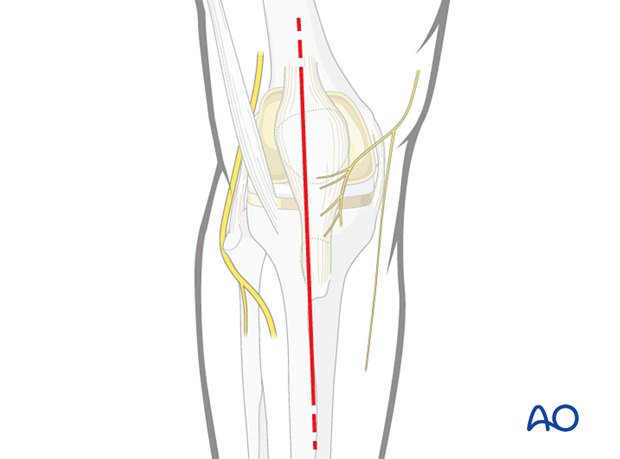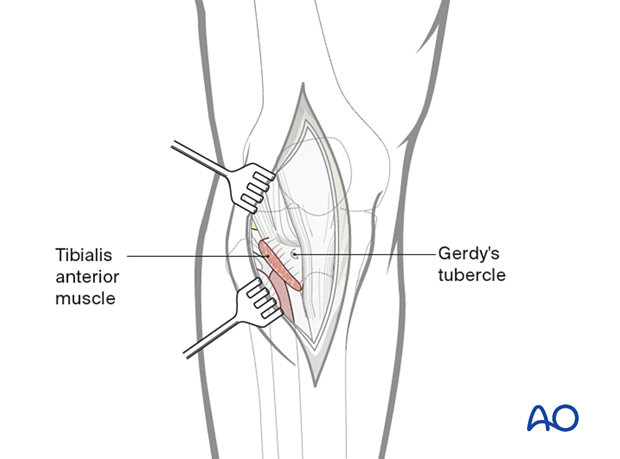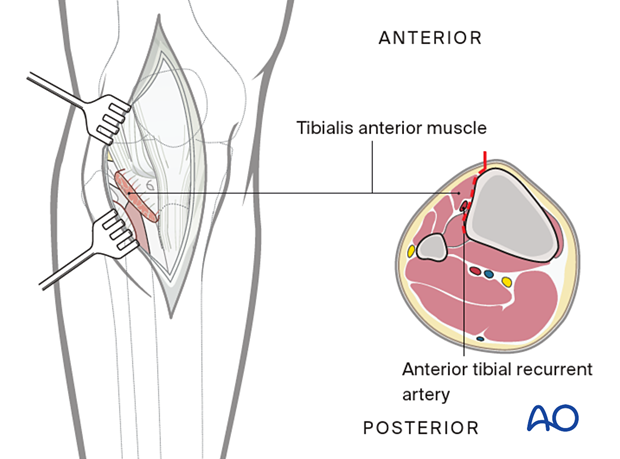Anterolateral approach to the proximal tibia
1. Skin incision
A prior midline skin incision can be considered for a deep anterolateral approach for the tibia. Consideration should be given to the amount of soft tissue retraction required to attain adequate visualization and stabilization of the fracture.

If the sentinel incision is too medial, then a minimally invasive incision can be considered in a more lateral position. The risk of skin complication is reduced when the periprosthetic fracture is remote in time from the original knee arthroplasty.

2. Opening the fascia
Open the deep fascia anterior to the iliotibial tract.
Release the proximal attachment of the tibialis anterior muscle. If necessary, release the iliotibial tract by incising it or taking a small flake of bone from Gerdy’s tubercle.

Dissect the tibialis anterior muscle from the bone without stripping the periosteum.
Retract the tibialis anterior muscle laterally.

3. Wound closure
Before closure, irrigate the knee joint to remove any debris. Standard layered closure is performed. The use of a suction drain may be considered. Close the skin with staples or nonabsorbable sutures.













